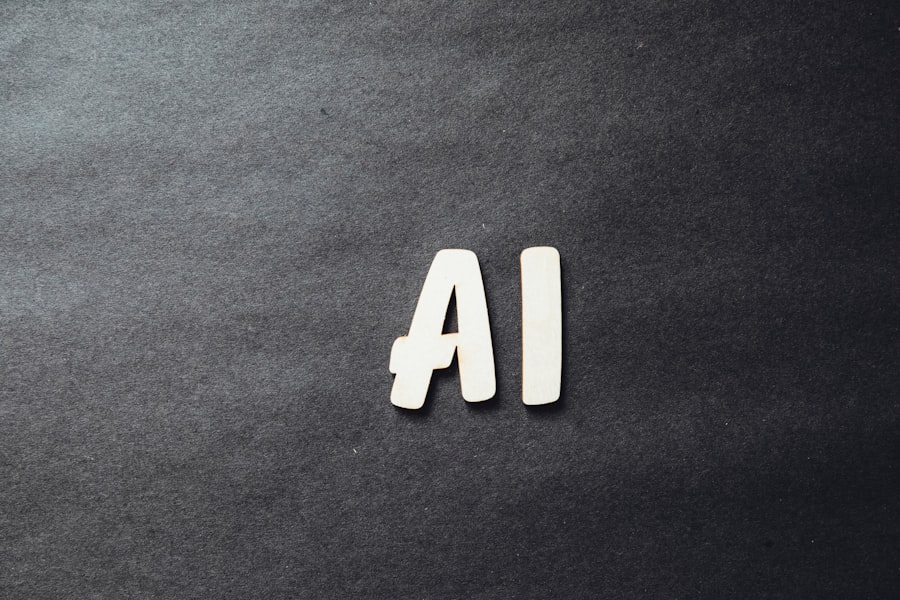As you navigate the evolving landscape of customer service, it becomes increasingly clear that artificial intelligence (AI) is reshaping the industry in profound ways. The introduction of AI technologies, such as chatbots and virtual assistants, has revolutionized how businesses interact with their customers. These tools can handle a multitude of inquiries simultaneously, providing instant responses and freeing human agents to tackle more complex issues.
This shift not only enhances efficiency but also raises questions about the future roles of customer service representatives. However, while AI can streamline operations and improve response times, it also poses challenges for those employed in customer service roles. Many workers may find themselves facing job displacement as companies opt for automated solutions to cut costs.
The need for human empathy and nuanced understanding in customer interactions remains vital, yet the balance between automation and personal touch is delicate. As you consider your career in this field, it’s essential to recognize both the opportunities and threats that AI presents.
Key Takeaways
- AI is impacting customer service jobs by automating routine tasks, allowing human workers to focus on more complex and personalized interactions with customers.
- Data entry positions are being transformed by AI, which can accurately and efficiently process large volumes of data, reducing the need for manual data entry.
- AI is automating assembly line jobs by performing repetitive tasks with precision and speed, leading to increased productivity and cost savings for businesses.
- The future of customer service in the age of AI involves a shift towards more advanced and personalized customer interactions, with AI supporting human workers in delivering exceptional service.
- Adapting to the changing landscape of data entry with AI requires workers to develop new skills in data analysis and interpretation, as AI takes over routine data entry tasks.
How AI is Transforming Data Entry Positions
In the realm of data entry, AI is making significant strides that are transforming traditional roles. You may have noticed that tasks once performed manually are increasingly being automated through machine learning algorithms and optical character recognition (OCR) technologies. These advancements allow for faster data processing and reduced human error, which can lead to increased productivity within organizations.
As a result, the demand for traditional data entry clerks is diminishing, prompting a reevaluation of what skills are necessary in this evolving job market. Moreover, the integration of AI into data entry processes means that you will need to adapt to new tools and technologies. Familiarity with AI-driven software can enhance your employability and open doors to more advanced positions that require analytical skills rather than rote data input.
Embracing these changes can position you favorably in a job market that increasingly values tech-savvy professionals who can leverage AI to drive efficiency and accuracy.
The Automation of Assembly Line Jobs with AI

The assembly line has long been a cornerstone of manufacturing, but AI is now ushering in a new era of automation that is reshaping this landscape.
Automated machines can perform repetitive tasks with remarkable consistency, reducing the likelihood of errors and increasing overall output.
This shift not only improves efficiency but also allows human workers to focus on more complex tasks that require critical thinking and problem-solving skills. However, the rise of AI in assembly line jobs also raises concerns about job security for many workers. As machines take over routine tasks, you may find that certain positions become obsolete.
Yet, this transformation also presents opportunities for those willing to adapt. By acquiring new skills related to machine operation, maintenance, or programming, you can position yourself as an invaluable asset in a workforce that increasingly relies on technology.
The Future of Customer Service in the Age of AI
| Metrics | 2018 | 2019 | 2020 |
|---|---|---|---|
| Customer Satisfaction | 85% | 87% | 89% |
| AI Integration | 20% | 35% | 50% |
| Response Time | 30 mins | 20 mins | 15 mins |
| Customer Retention | 75% | 80% | 85% |
Looking ahead, the future of customer service in an AI-driven world is both exciting and uncertain. You may envision a landscape where AI tools work alongside human agents to create a seamless customer experience. With advancements in natural language processing and sentiment analysis, AI can better understand customer emotions and preferences, allowing for more personalized interactions.
This synergy between human intuition and machine efficiency could redefine what exceptional customer service looks like. Nevertheless, as you consider this future, it’s crucial to acknowledge the potential pitfalls. The reliance on AI could lead to a depersonalization of customer interactions if not managed carefully.
Striking the right balance between automation and human touch will be essential for businesses aiming to maintain customer loyalty and satisfaction. As you prepare for this evolving landscape, developing skills in emotional intelligence and communication will be key to thriving in a customer service role that increasingly incorporates AI.
Adapting to the Changing Landscape of Data Entry with AI
As AI continues to reshape data entry roles, adapting to this changing landscape is imperative for your career growth. You may find that traditional data entry tasks are being replaced by more sophisticated functions that require analytical thinking and problem-solving abilities. Embracing continuous learning will be essential as you seek to stay relevant in an industry that values adaptability and innovation.
To thrive in this new environment, consider investing time in upskilling or reskilling yourself. Familiarizing yourself with AI tools and data management software can enhance your marketability and open doors to new opportunities. Additionally, developing skills in data analysis or project management can position you as a valuable contributor in organizations looking to leverage AI for strategic decision-making.
The Role of AI in Streamlining Assembly Line Processes

AI’s role in streamlining assembly line processes cannot be overstated. As you observe factories adopting smart technologies, it becomes clear that these innovations are designed to optimize production efficiency.
This level of insight allows companies to make informed decisions that drive productivity while minimizing waste. Furthermore, the integration of AI into assembly lines enables predictive maintenance, which can significantly reduce downtime caused by equipment failures. By utilizing sensors and data analytics, machines can alert operators when maintenance is needed before a breakdown occurs.
This proactive approach not only saves time but also ensures that production schedules remain on track. As you consider your future in manufacturing, understanding how to work alongside these advanced systems will be crucial for your success.
Challenges and Opportunities for Customer Service Workers in the Era of AI
As a customer service worker navigating the era of AI, you face both challenges and opportunities that will shape your career trajectory. On one hand, the threat of job displacement looms large as companies increasingly turn to automated solutions for cost savings. You may find yourself competing with chatbots and virtual assistants that can handle basic inquiries without human intervention.
This reality necessitates a shift in your skill set toward more complex problem-solving and interpersonal communication. On the other hand, the rise of AI also presents opportunities for growth within the customer service sector. As businesses seek to enhance their customer experience through personalized interactions, there will be a growing demand for skilled professionals who can interpret data insights and provide tailored solutions.
By positioning yourself as an expert in customer relationship management or data analysis, you can carve out a niche that leverages both human intuition and technological advancements.
Leveraging AI for Efficient and Accurate Data Entry
In the realm of data entry, leveraging AI can lead to significant improvements in efficiency and accuracy. As you explore various AI-driven tools available today, you’ll discover that they can automate repetitive tasks such as data extraction and validation. This automation not only speeds up the process but also minimizes human error, allowing you to focus on higher-level analytical tasks that require critical thinking.
Moreover, embracing AI technologies can enhance your ability to manage large volumes of data effectively. With machine learning algorithms capable of identifying patterns and trends within datasets, you can gain valuable insights that inform business decisions. By becoming proficient in these tools, you position yourself as an indispensable asset within your organization—one who can harness the power of AI to drive strategic initiatives forward.
The Evolution of Assembly Line Jobs in the Age of AI
The evolution of assembly line jobs in the age of AI is marked by a significant transformation in how work is performed on production floors. As you witness the integration of robotics and smart technologies into manufacturing processes, it becomes evident that traditional roles are being redefined. Tasks once performed by humans are increasingly being automated, leading to greater efficiency but also raising concerns about job security.
However, this evolution also opens up new avenues for career advancement within the manufacturing sector. As assembly lines become more technologically advanced, there will be a growing need for skilled workers who can operate and maintain these systems. By investing in training programs focused on robotics or automation technologies, you can position yourself at the forefront of this industry shift—ready to embrace new challenges and opportunities as they arise.
Training and Reskilling for Customer Service, Data Entry, and Assembly Line Workers in the AI Era
In light of the rapid advancements in AI technology, training and reskilling have become essential components for success across various industries—including customer service, data entry, and assembly line jobs. As you navigate this changing landscape, it’s crucial to seek out educational opportunities that align with emerging trends in your field. Whether through formal training programs or online courses, investing in your skill set will empower you to adapt effectively.
Moreover, organizations themselves must prioritize employee development by offering resources for continuous learning. By fostering a culture of growth and innovation within your workplace, you can ensure that employees are equipped with the knowledge needed to thrive alongside AI technologies. Embracing lifelong learning will not only enhance your career prospects but also contribute positively to your organization’s overall success.
The Ethical and Social Implications of AI’s Impact on Customer Service, Data Entry, and Assembly Line Jobs
As you reflect on the ethical and social implications of AI’s impact on customer service, data entry, and assembly line jobs, it becomes clear that these advancements come with both benefits and challenges. On one hand, AI has the potential to improve efficiency and reduce costs for businesses; on the other hand, it raises questions about job displacement and worker rights. As society grapples with these issues, it’s essential for stakeholders—including employers, employees, and policymakers—to engage in meaningful dialogue about how best to navigate this transition.
Furthermore, considerations around data privacy and security are paramount as organizations increasingly rely on AI-driven solutions. You may find yourself questioning how personal information is handled within automated systems or whether ethical guidelines are being followed in their implementation. Advocating for transparency and accountability within your workplace can help ensure that technological advancements align with ethical standards while fostering trust among customers and employees alike.
In conclusion, as you navigate the complexities brought about by AI across various job sectors—be it customer service, data entry, or assembly line work—embracing change through continuous learning will be key to thriving in this new era. By understanding both the challenges posed by automation as well as the opportunities it presents for growth and innovation, you can position yourself favorably within an ever-evolving job market.
As artificial intelligence continues to evolve, its potential to transform the job market is a topic of significant interest and concern. Many wonder which jobs AI might take over in the near future. A related article that delves into the implications of AI on employment can be found on How Wealth Grows. This article explores the various sectors that could be impacted by AI advancements and discusses the potential for both job displacement and creation. For more insights, you can read the full article by visiting How Wealth Grows.
FAQs
What is AI?
AI, or artificial intelligence, refers to the simulation of human intelligence in machines that are programmed to think and act like humans. This includes tasks such as learning, problem-solving, and decision-making.
What jobs could AI take over?
AI has the potential to take over jobs that involve repetitive tasks, data analysis, and pattern recognition. This includes roles in manufacturing, customer service, data entry, and even some aspects of healthcare and finance.
What are some examples of jobs that AI could take over?
Some examples of jobs that AI could take over include assembly line workers, telemarketers, data entry clerks, and even some aspects of radiology and financial analysis.
What are the potential impacts of AI taking over jobs?
The potential impacts of AI taking over jobs include job displacement, changes in the labor market, and the need for workers to adapt and acquire new skills. It could also lead to increased efficiency and productivity in certain industries.
How can workers prepare for the impact of AI on jobs?
Workers can prepare for the impact of AI on jobs by acquiring new skills that are in demand, such as programming, data analysis, and problem-solving. Lifelong learning and adaptability will be key in the face of AI advancements.
